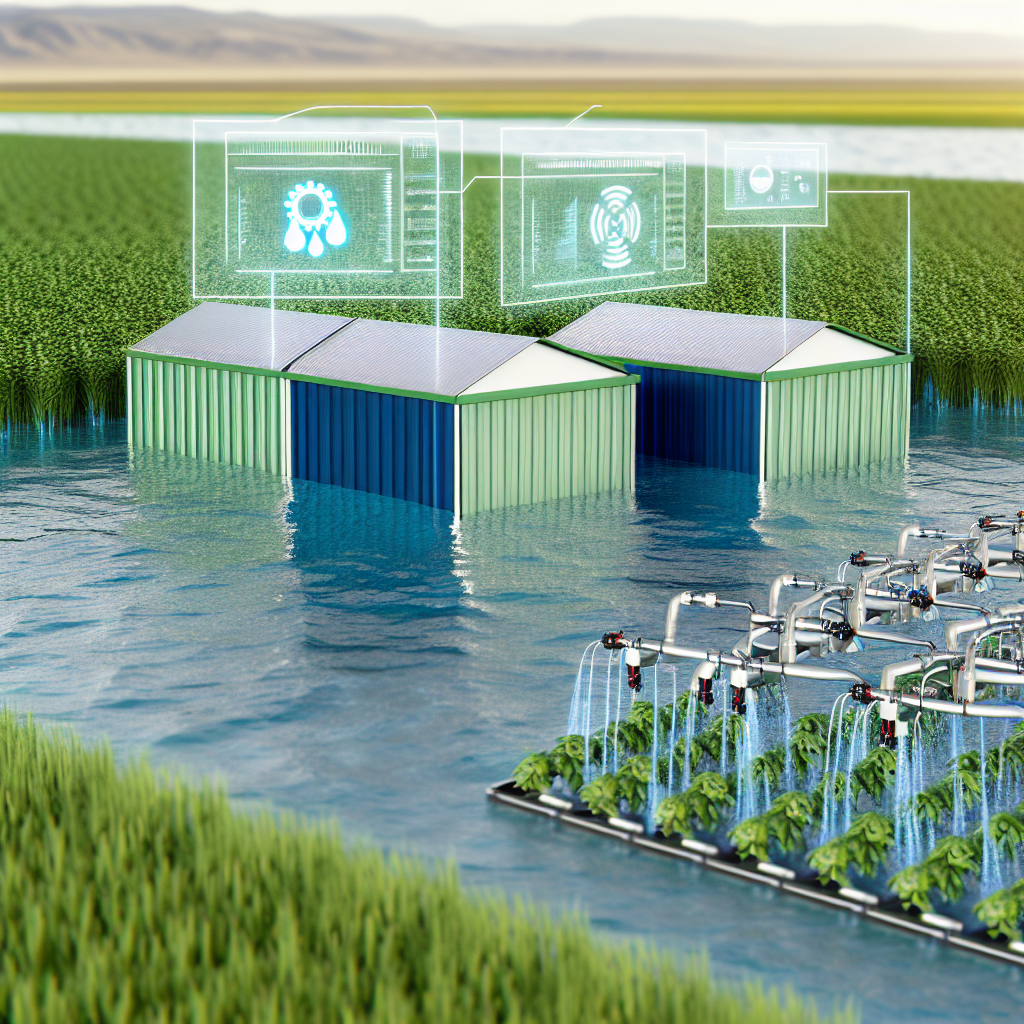-
- Optimizing Water Usage in Agriculture with AI
- Understanding the Role of AI in Agriculture
- Configuration Steps for Implementing AI in Water Management
- Step 1: Assess Current Water Usage
- Step 2: Install IoT Sensors
- Step 3: Implement AI Algorithms
- Step 4: Optimize Irrigation Scheduling
- Practical Examples of AI in Water Management
- Case Study: The Use of AI in Drip Irrigation
- Statistics Supporting AI Adoption
- Best Practices for Optimizing Water Usage with AI
- Conclusion
Optimizing Water Usage in Agriculture with AI

Water scarcity is a pressing global issue, particularly in agriculture, which accounts for approximately 70% of freshwater usage worldwide. As climate change exacerbates water shortages, optimizing water usage in agriculture has become crucial for sustainable farming practices. Artificial Intelligence (AI) offers innovative solutions to enhance water management, improve crop yields, and reduce waste. This guide will explore actionable steps to implement AI-driven strategies for optimizing water usage in agriculture.
Understanding the Role of AI in Agriculture
AI technologies, including machine learning, data analytics, and IoT (Internet of Things), can analyze vast amounts of data to make informed decisions about water usage. By leveraging AI, farmers can:
- Monitor soil moisture levels in real-time.
- Predict weather patterns and irrigation needs.
- Optimize irrigation schedules based on crop requirements.
- Reduce water waste through precision agriculture techniques.
Configuration Steps for Implementing AI in Water Management
Step 1: Assess Current Water Usage
Begin by evaluating your current water usage practices. This includes:
- Identifying water sources and usage patterns.
- Measuring soil moisture levels.
- Analyzing crop water requirements.
Step 2: Install IoT Sensors
Deploy IoT sensors to collect real-time data on soil moisture, temperature, and weather conditions. Follow these steps:
- Select appropriate sensors based on your crop type and field conditions.
- Install sensors at various depths to monitor moisture levels accurately.
- Connect sensors to a central data platform for analysis.
Step 3: Implement AI Algorithms
Utilize AI algorithms to analyze the data collected from IoT sensors. Here’s a simple example using Python:
import pandas as pd
from sklearn.linear_model import LinearRegression
# Load soil moisture data
data = pd.read_csv('soil_moisture_data.csv')
X = data[['temperature', 'humidity']]
y = data['moisture_level']
# Train the model
model = LinearRegression()
model.fit(X, y)
# Predict moisture levels
predictions = model.predict([[30, 70]]) # Example input
print(predictions)Step 4: Optimize Irrigation Scheduling
Based on the AI analysis, create an optimized irrigation schedule. Consider the following:
- Use predictive analytics to determine the best times for irrigation.
- Adjust schedules based on real-time weather forecasts.
- Implement automated irrigation systems that respond to sensor data.
Practical Examples of AI in Water Management
Case Study: The Use of AI in Drip Irrigation
A farm in California implemented an AI-driven drip irrigation system that adjusted water delivery based on real-time soil moisture data. As a result, the farm reported:
- A 30% reduction in water usage.
- A 20% increase in crop yield.
- Improved soil health and reduced runoff.
Statistics Supporting AI Adoption
According to a report by the Food and agriculture Organization (FAO), farms that adopted AI technologies for water management saw an average of:
- 25% reduction in water consumption.
- 15% increase in overall productivity.
Best Practices for Optimizing Water Usage with AI
- Regularly calibrate and maintain IoT sensors for accurate readings.
- Integrate AI systems with existing farm management software.
- Train staff on data interpretation and AI tool usage.
- Continuously monitor and adjust irrigation practices based on AI insights.
Conclusion
Optimizing water usage in agriculture through AI is not just a technological advancement; it is a necessity for sustainable farming in the face of climate change. By following the outlined steps—assessing current practices, installing IoT sensors, implementing AI algorithms, and optimizing irrigation schedules—farmers can significantly reduce water waste and enhance crop productivity. Embracing these technologies will not only lead to better resource management but also contribute to the overall sustainability of agricultural practices. The future of farming lies in the intelligent use of data, and AI is at the forefront of this transformation.